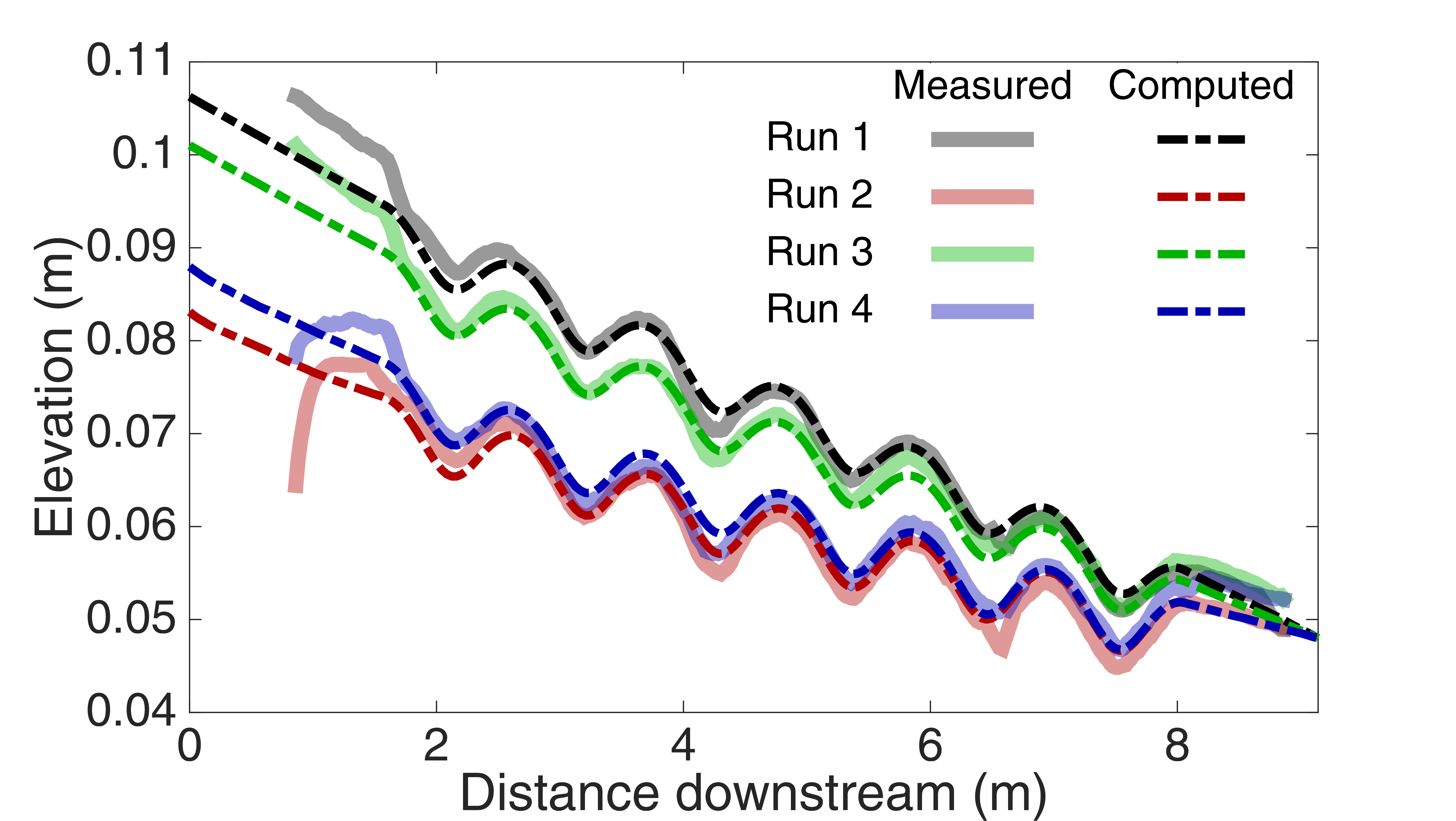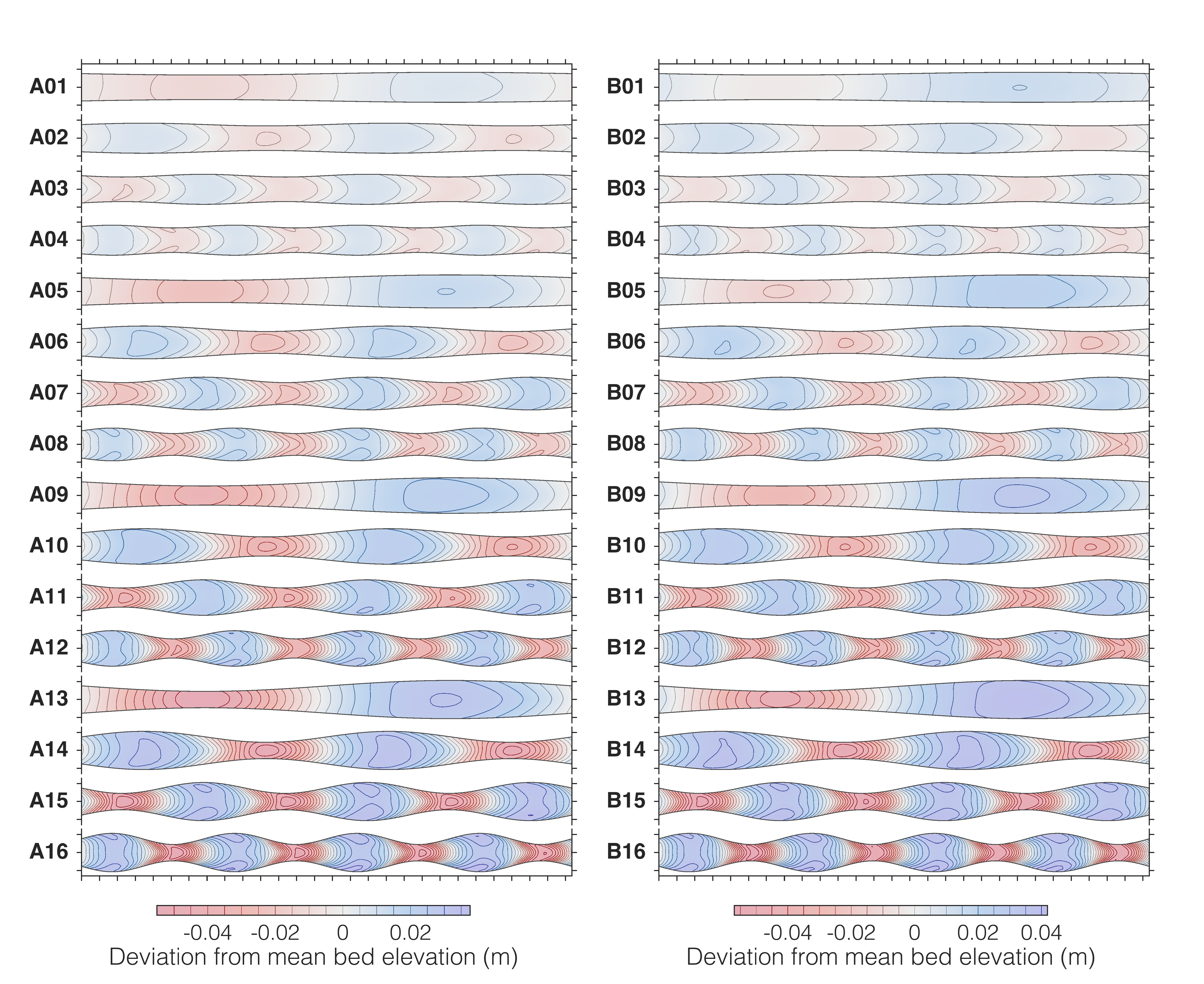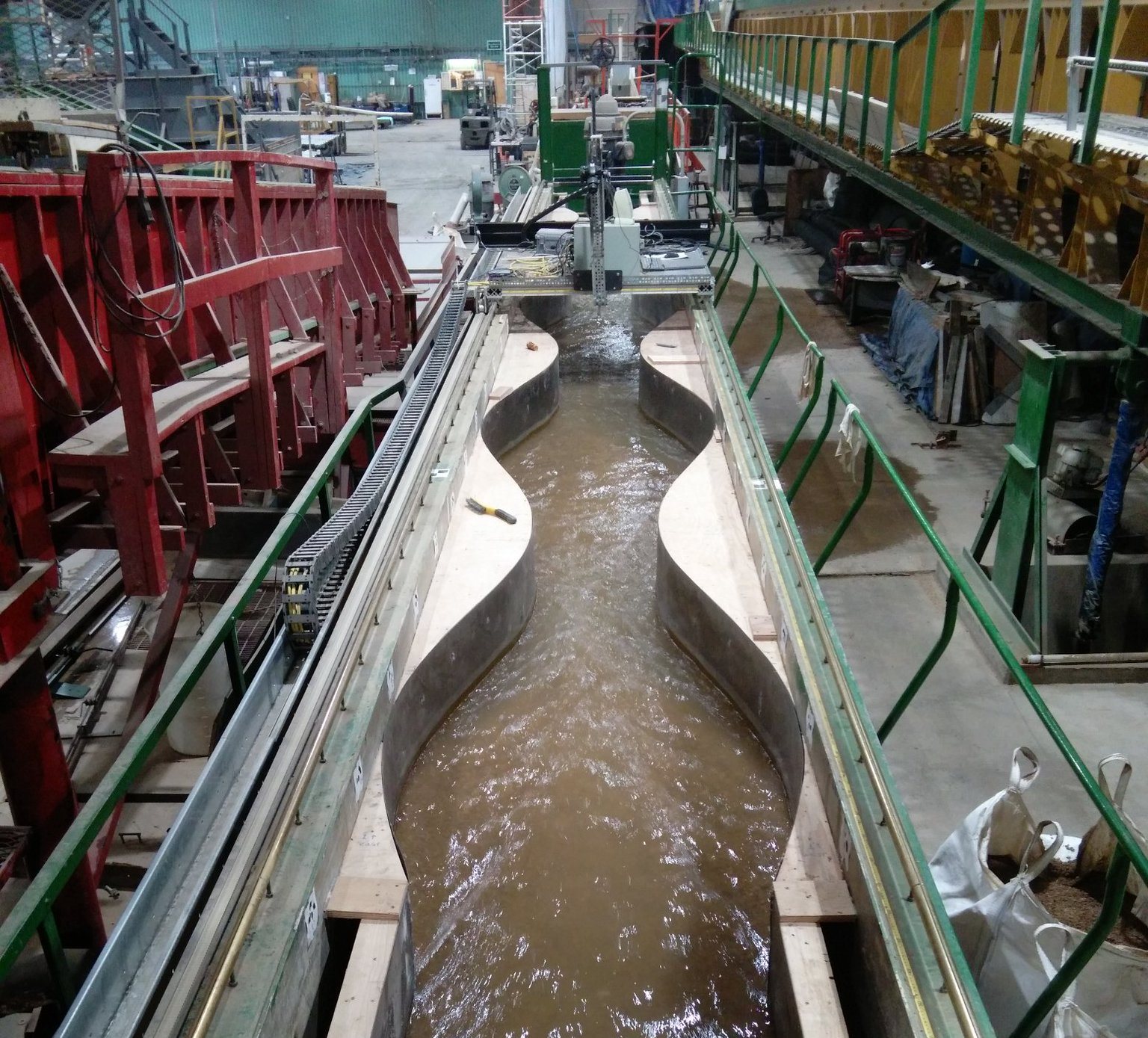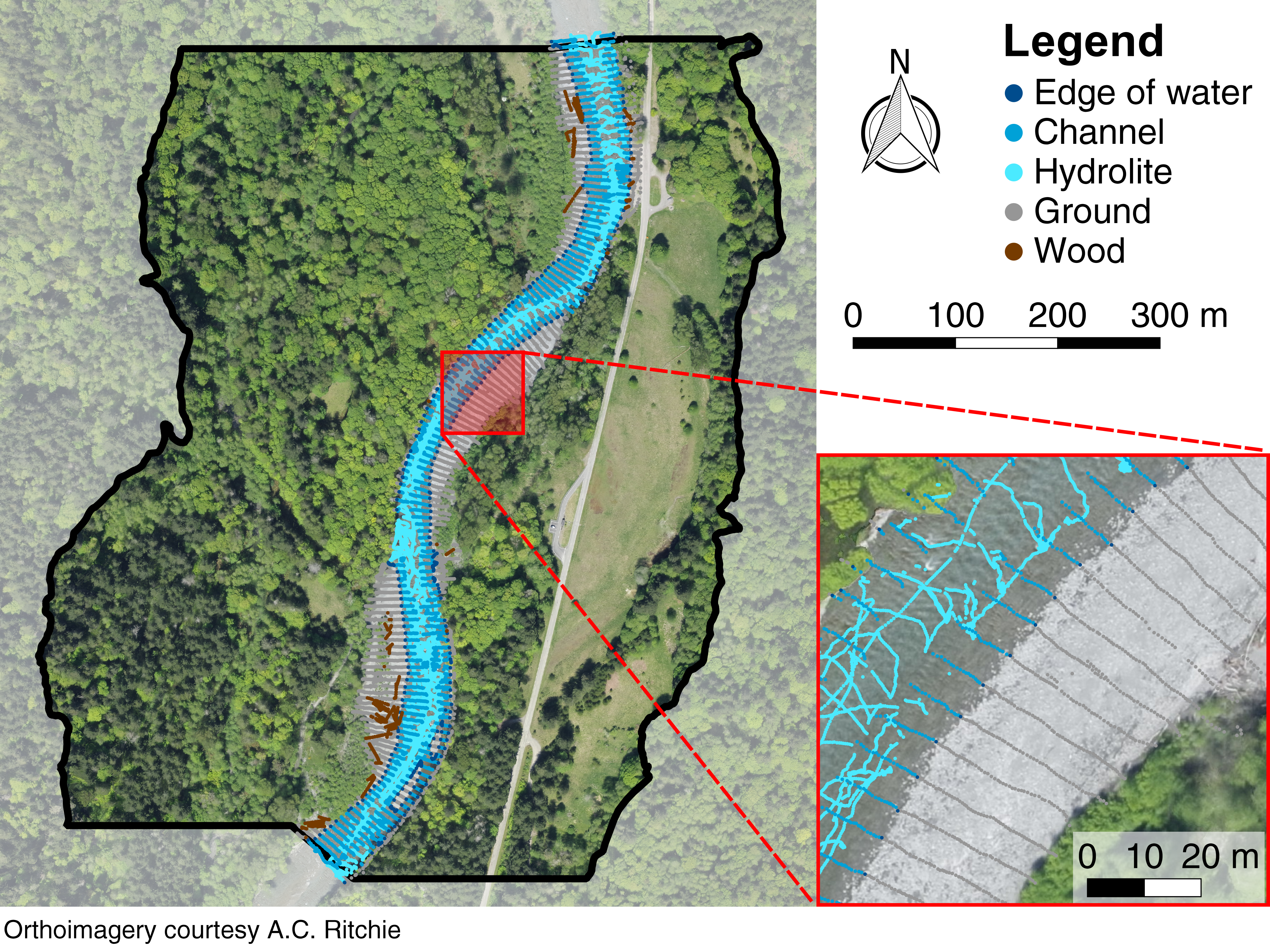
|
One-Dimensional Numerical Modeling |
| I have created a one-dimensional hydro-morphodynamic model in Fortran90 with submodels corresponding to hydraulics, bedload transport, morphodynamics, and stratigraphic record-keeping. The model was developed to explore the effect of variations in geometry, sediment supply, and unsteady flow on sediment pulse dynamics. The model was verified using the flume experiments of Nelson et al. [2015] (see figure to the left). A manuscript detailing the development of the model and the results of the numerical expirements is being prepared for submission to Water Resources Research. | |

|
Two-Dimensional Numerical Modeling |
| To further explore how width variations control gravel-bed morphodynamics under changing sediment supply and steady versus unsteady flow I have used a depth-averaged implementation of Delft3D. By systematically varying the amplitude and wavenumber of sinuosoidal downstream variations in channel width we can examine the effect of width on equilibrium bed morphology. The results of these numerical experiments are being prepared into a manuscript for submission to Journal of Geophysical Research: Earth Surface. | |
| Laboratory Flume Experiments | |

|
I have been involved in a number of flume experiments that have taken place in the Hydraulics Lab at Colorado State University's Engineering Research Center over the last few years. A series of flume experiments, reported in Nelson et al. [2015], were conducted in a 0.22 m × 9.14 m flume, and explored sediment pulse movement in a variable-width channel. |

|
More recently I have completed a set of experiments in a 1.22 m × 18.29 m sediment feed flume, where a series of phases (1. steady flow, steady sed. supply; 2. unsteady flow, steady sed. supply; and 3. unsteady flow, 2×steady sed. supply) were performed for both a straight-walled and variable-width channel. A manuscript presenting these experiments and their results is being prepared for submission to Journal of Geophysical Research: Earth Surface. |

|
Elwha River Field Studies |
| The removal of Glines Canyon Dam as part of the Elwha River restoration project provides a natural setting to explore how a series of riffle-pool sequences forced by width variations responds to changing sediment regimes. Our study reach is approximately 1 km in length and located roughly 5 km downstream of the former Glines Canyon Dam site. We have completed three topographic surveys (Sept. 2014, June 2015, and Aug. 2016), coupled with 2D hydrodynamic modeling (Nays2DH, and are currently preparing a manuscript for submission to Earth Surface Processes and Landforms. | |
| Structure-from-Motion Photogrammetry | |

|
Detailed topographic measurements are essential for flume studies and the emergence of Structure-from-Motion (SfM) photogrammetry
and Multi-View Stereo (MVS) techniques have provided a low-cost alternative to traditional laser methods in the laboratory.
While many studies have examined the performance of SfM in field settings little work has been done at laboratory scales.
We published a paper in Geomorphology [Morgan et al. 2017]
exploring the relative performance to two terrestrial laser scanners (Leica and Faro) and two SfM-MVS implementations (PhotoScan and VisualSFM).
Our results suggest that SfM methods can produce topographic point clouds with comparable accuracy to laser scanning methods, with point densities orders of magnitude higher.
Furthermore, in order to capture sub-grain-scale topography, researchers should generally attempt to achieve 100 pixels per grain in their imagery.
|

|
Although the use of SfM-MVS methods for topographic surveying is becoming increasingly popular, the resources available for geoscientists remains somewhat limited (but see James Dietrich's blog). As a tool to help others become familiar with both SfM-MVS and one of the free software options available to create three-dimensional point clouds from digital imagery, Dan Brogan and I have created a simple tutorial for using VisualSFM in geoscience applications. A zipped folder containing all the documents and files necessary for the tuturial can be downloaded here. A .pdf file of the just the tutorial document can be downloaded here. |
© 2017 Jacob Alan Morgan